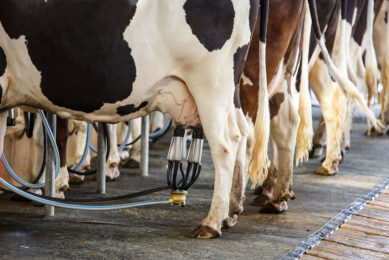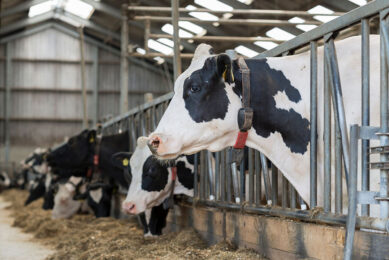US milk output per cow is projected to increase

Milk production in the United States is projected to increase in the years up to 2025. This is stated in the report ‘USDA Agricultural Projections to 2025’.
However, the long-term upward trend in output per cow continues. The authors of the report state that strong domestic and export demand for dairy products combined with only moderate gains in projected feed costs provide favourable returns to US dairy producers that also encourage a general expansion of milk cow numbers.
Also read: US dairy cows produce the most milk
The main messages in the report:
- Milk cow numbers are projected to decrease in 2016, remain about even through 2020, and then rise through the remainder of the projection period. Rising milk prices after 2018 and lower feed costs than in recent years give favourable returns to producers and provide economic incentives for this continued expansion.
- US milk output per cow is projected to increase through the projection period, reflecting continued technological and genetic developments as well as efficiency gains resulting from consolidation in the sector.
- Domestic demand grows at a strong pace, with commercial use of dairy products rising faster than the growth in US population over the next decade. Demand for cheese is expected to rise due to greater consumption of prepared foods and increased away-from home eating. Butter demand is also expected to grow, in part due to the phase out of transfats. A decline in per capita consumption of fluid milk products is expected to continue.
- Commercial exports of US dairy products declined in 2015, mostly due to lower demand from China and greater competition from the EU as a result of the Russian trade ban. However, US exports are projected to recover and expand over the next decade, led by greater exports of products that are high in non-fat milk solids, such as non-fat dry milk. Exports are projected to reach record levels on both a milk-fat and a skim-solids basis. Production increases in other major dairy exporting countries are expected to lag growth in global import demand.
- Nominal farm-level milk prices are projected to decline through 2018 as lower feed costs encourage increased production. Prices then rise faster than the general inflation rate over the remainder of the projection period, largely on the strength of export market gains.
Join 13,000+ subscribers
Subscribe to our newsletter to stay updated about all the need-to-know content in the dairy sector, two times a week.










